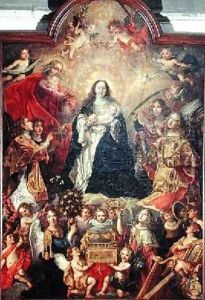or Liemaecker, Nicolaas de Liemakere Paintings
Nicolaas de Liemaecker, also known as Nicolaes de Liemakere or simply called Il Moro, was a Flemish Renaissance painter born around 1505. The details of his early life and training are not very well-documented, but he is known to have been active in Bruges, where he became a master in the Guild of Saint Luke in 1527. His nickname 'Il Moro' may have been derived from a characteristic dark complexion or from a particular fondness for depicting dark-hued subjects.
De Liemaecker's work was influenced by the Italian Renaissance, which was common among Flemish artists of the time due to the cultural exchange between the Low Countries and Italy. His style is characterized by a meticulous attention to detail, a rich color palette, and a certain degree of classicism that was being integrated into Northern Renaissance works. He painted primarily religious subjects, which was typical for the period, and his compositions often featured elaborate costumes and interiors.
Although Nicolaas de Liemaecker was a respected artist in his time and had a successful career, much of his work has been lost or remains unidentified. This lack of surviving works has made it difficult for art historians to fully assess his impact and oeuvre. Nonetheless, he is considered an important figure in the transition from the late Gothic to the Renaissance style in Flemish art.
The later years of his life are as obscure as his early years, with the last known record of him dating to 1575. It is presumed that he died sometime shortly after that date. Overall, while Nicolaas de Liemaecker may not be as well-known as some of his contemporaries, his contributions to the evolution of Flemish painting during a pivotal artistic era are still recognized by scholars.
